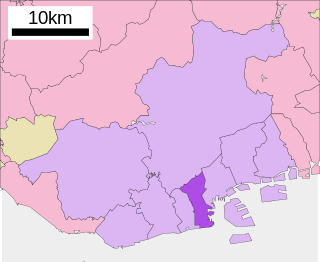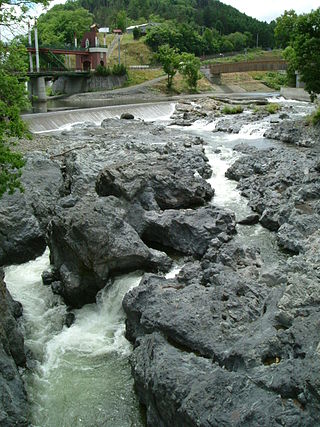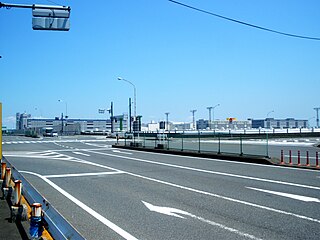
Hyogo is one of nine wards of Kobe, Japan. It has an area of 14.56 km2 and a population of 106,322.
Permanent employment is work for an employer for which the employee receives payment directly from that employer. Permanent employees do not have a predetermined end date to employment. In addition to their wages, they often receive benefits like subsidized health care, paid vacations, holidays, sick time, or contributions. Permanent employees are often eligible to switch job positions within their companies. Even when employment is "at will", permanent employees of large companies are generally protected from abrupt job termination by severance policies, like advance notice in case of layoffs, or formal discipline procedures. They may be eligible to join a union, and may enjoy both social and financial benefits of their employment.
The 2007 Japan Golf Tour was the 35th season of the Japan Golf Tour, the main professional golf tour in Japan since it was formed in 1973.

National Route 413 is a national highway of Japan connecting Fujiyoshida, Yamanashi and Sagamihara, Kanagawa in Japan, with a total length of 71.7 km (44.55 mi).
The 2008 Japan Golf Tour was the 36th season of the Japan Golf Tour, the main professional golf tour in Japan since it was formed in 1973.
The 2009 Japan Golf Tour was the 37th season of the Japan Golf Tour, the main professional golf tour in Japan since it was formed in 1973.
Tourism Areas are areas or zones designated by the Japan Tourism Agency from 2008. As of April 2009, 30 Tourism Areas are located throughout Japan. The Japan Tourism Agency set the law in 2008 regarding this area to support and promote more synergistic activities among local governments, tourism associations, tourism industries and local hotels and other local organizations and individuals.

Homelessness in Japan is a social issue primarily affecting middle-aged and elderly males. Homelessness is thought to have peaked in the 1990s as a consequence of the collapse of the Japanese asset price bubble and has largely fallen since then.

Shokotsu River is a river in Hokkaidō, Japan. It is designated a Class A river by the Ministry of Land, Infrastructure, Transport and Tourism.
Japanese people in China are Japanese expatriates and emigrants and their descendants residing in Greater China. In October 2018, there were 171,763 Japanese nationals living in the People's Republic of China, and 24,280 Japanese nationals living in the Republic of China (Taiwan).
The 2012 Japan Golf Tour was the 40th season of the Japan Golf Tour, the main professional golf tour in Japan since it was formed in 1973.
The 2015 Japan Golf Tour was the 43rd season of the Japan Golf Tour, the main professional golf tour in Japan since it was formed in 1973.
The 2005 Japan Golf Tour was the 33rd season of the Japan Golf Tour, the main professional golf tour in Japan since it was formed in 1973.
The 2018 Japan Golf Tour was the 46th season of the Japan Golf Tour, the main professional golf tour in Japan since it was formed in 1973.

Yashio (八潮) is a district of Shinagawa, Tokyo, Japan. The current administrative place names are Yashio 1-chome to Yashio 5-chome. It is an area where the residential address has been displayed. It corresponds to the area on the north side of Ōi Wharf Part 1. The south side of Ōi Wharf 1 is Tokai, Ōta, Tokyo.

Higashi-Yashio is a district of Shinagawa, Tokyo, Japan. This is a single, discrete municipal unit, without any wards or sub-districts.





